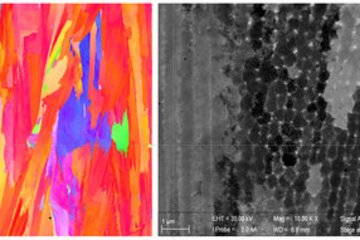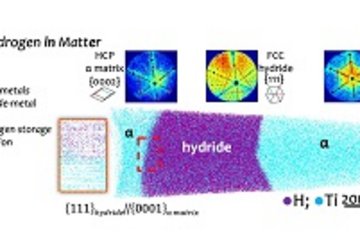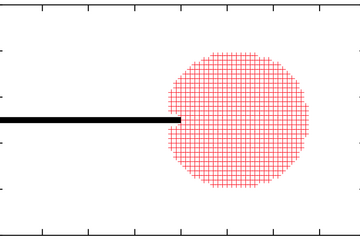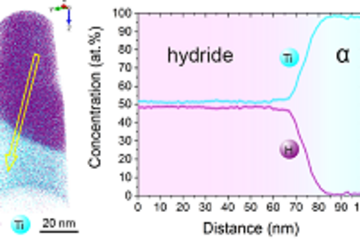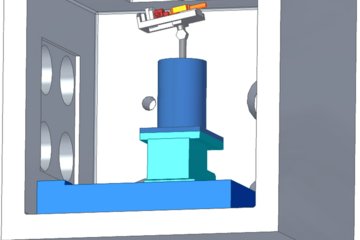All genres
1.
Journal Article
Impact of focused ion beam-induced damage on micromechanical properties in Hematite. Scripta Materialia 271, 117000 (2026)
2.
Journal Article
Elastic limit and relaxation of GaAs/In(Al,Ga)As core/shell nanowires for near-infrared applications. Nanotechnology 36 (9), 095703 (2025)
3.
Journal Article
Effect of the scanning strategy on texture of grain-oriented electrical steel (Fe-4wt%Si) processed via laser powder-bed fusion and subsequent thermomechanical processing. Materials Characterization 221, 114789 (2025)
4.
Journal Article
Topological grain boundary segregation transitions. Science 386 (6720), pp. 420 - 424 (2024)
5.
Journal Article
Laser powder bed fusion synthesis of nanoparticle reinforced CoCrFeNi. Additive Manufacturing 91, 104338 (2024)
6.
Journal Article
Micro-mechanical deformation behavior of heat-treated laser powder bed fusion processed Ti–6Al–4V. Scripta Materialia 233, 115505 (2023)
7.
Journal Article
Melt pool signatures of TiN nanoparticle dry-coated Co25Cr25Fe25Ni25 metal powder in laser-powder-bed-fusion. Materials and Design 226, 111626 (2023)
8.
Journal Article
Microstructure, grain boundary evolution and anisotropic Fe segregation in (0001) textured Ti thin films. Acta Materialia 238, 118180 (2022)
9.
Journal Article
Symbiotic crystal-glass alloys via dynamic chemical partitioning. Materials Today 51, pp. 6 - 14 (2021)
10.
Journal Article
Substitutional synthesis of sub-nanometer InGaN/GaN quantum wells with high indium content. Scientific Reports 11 (1), 20606 (2021)
11.
Journal Article
Influence of substrates and e-beam evaporation parameters on the microstructure of nanocrystalline and epitaxially grown Ti thin films. Applied Surface Science 562, 150194 (2021)
12.
Talk
Strengthening of CoCrFe(Mn)Ni high entropy alloys by dislocation pinning: From Lattice friction & SRO to particle strengthening. Possibilities and Limitations of Quantitative Materials Modeling and Characterization 2024, Bernkastel-kues, Germany (2024)
13.
Talk
Unravelling grain boundary structures in Ti thin films using aberration-corrected transmission electron microscopy. MSE Darmdtadt (Virtual), Darmstadt, Germany (2020)
14.
Poster
Unravelling the atomic structure and segregation of Ʃ13 [0001] tilt grain boundaries in titanium by advanced STEM. Microscopy Conference 2021 & Multinational Conference on Microscopy 2021, Vienna, Austria (2021)
15.
Poster
Atomic structure and Fe-segregation in Ʃ13 [0001] Titanium tilt grain boundaries. PICO 2021 (Virtual) (2021)
16.
Poster
From epitaxially grown thin films to grain boundary analysis in Cu and Ti. International Workshop on Advanced and In-situ Microscopies of Functional Nanomaterials and Devices, IAMNano, Düsseldorf, Germany (2019)
17.
Thesis - PhD
Microstructure and grain boundary evolution in titanium thin films. Dissertation, Ruhr-Universität Bochum (2022)




